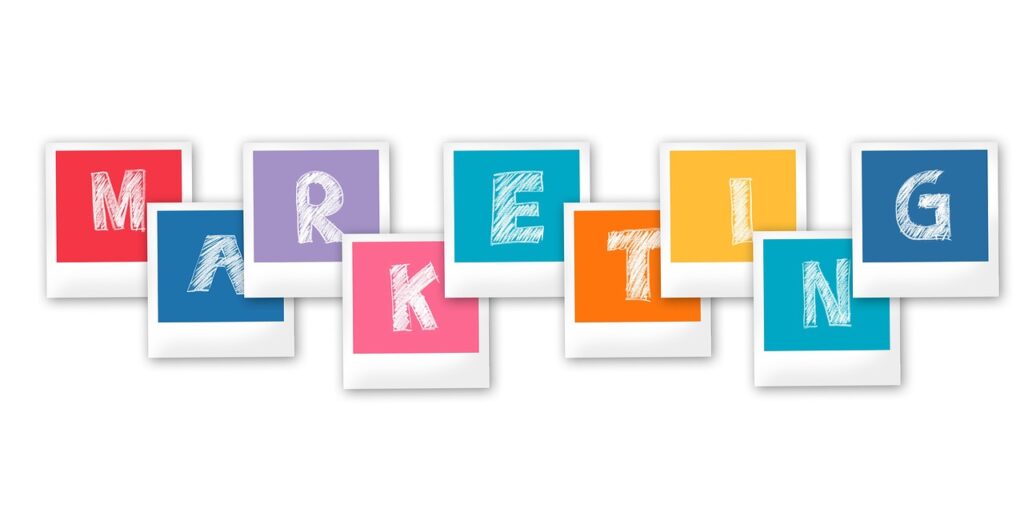
In 2025, earning money without actively working is no longer just a dream—it’s a reality. Thanks to the rapid advancement of automation, AI-powered tools, and online platforms, creating sustainable passive income streams is now more accessible than ever. Whether you’re aiming for financial independence, planning for retirement, or simply looking to supplement your current salary, there are countless ways to make your money work for you.
From dividend stock investing and real estate crowdfunding to YouTube automation and AI-generated content, this article covers 15 proven passive income ideas you can leverage in 2025. With the right strategy and consistency, you can build long-term wealth and enjoy financial freedom while you sleep.
1. Invest in Dividend Stocks

Investing in dividend stocks is one of the most time-tested and reliable ways to generate passive income. With the right strategy, you can earn consistent cash flow through quarterly or annual dividend payouts while also benefiting from potential stock price appreciation. In 2025, dividend investing is more accessible than ever, thanks to innovative trading platforms, AI-driven investment tools, and automated portfolio management services.
What Are Dividend Stocks?
Dividend stocks are shares of companies that distribute a portion of their profits to shareholders in the form of dividends. These payouts can be made:
- Quarterly: Most common payout frequency.
- Annually or Semi-annually: Some companies opt for less frequent distributions.
- Monthly: A smaller number of companies offer monthly dividends, which can provide a steady cash flow.
Dividends are usually paid in cash, but some companies offer stock dividends, allowing you to reinvest and acquire more shares without additional investment.
Why Invest in Dividend Stocks?
Here are the key reasons why dividend stocks are a lucrative passive income strategy in 2025:
- Steady Cash Flow:
- Unlike growth stocks, which rely on capital appreciation, dividend stocks provide regular income through payouts.
- This makes them ideal for retirement planning or creating a secondary income stream.
- Compound Growth with DRIP:
- Many brokers offer Dividend Reinvestment Plans (DRIP), which automatically reinvest your dividends into additional shares.
- This allows your investment to compound over time, boosting your portfolio growth without additional contributions.
- Inflation Hedge:
- In 2025, with inflation rates fluctuating, dividend-paying companies often increase their payouts over time, helping your income keep pace with inflation.
- Lower Volatility:
- Dividend stocks, especially blue-chip companies, tend to be more stable during market downturns, making them a safer option for conservative investors.
Dividend Growth Strategy: Maximize Your Passive Income
To build significant passive income from dividend stocks, focus on:
- Reinvesting Dividends: Use DRIP to reinvest dividends, increasing your share count and future payouts.
- Compounding Over Time: Let your dividends and reinvested shares grow over 5-10 years to maximize returns.
- Investing in Growth Dividend Stocks: While high-yield dividend stocks are attractive, combining them with dividend growth stocks ensures long-term appreciation and income.
Conclusion: Build Wealth with Dividend Stocks
Investing in dividend stocks is a proven strategy for generating passive income and building long-term wealth. In 2025, the combination of AI-powered trading platforms, fractional shares, and dividend ETFs makes it easier than ever for both beginners and seasoned investors to create a reliable stream of income.
By focusing on dividend growth, reinvestment, and diversification, you can steadily grow your portfolio and enjoy consistent cash flow for years to come.
Also: Top 10 AI Tools for Entrepreneurs
2. Create and Sell Digital Products: A Scalable Passive Income Stream in 2025

In 2025, creating and selling digital products is one of the most profitable and scalable ways to generate passive income. Unlike physical products, digital items require no inventory, shipping, or storage costs. Once you create them, they can be sold repeatedly with minimal overhead, making them an excellent source of recurring revenue.
Whether you’re a content creator, designer, educator, or entrepreneur, the opportunities in the digital product market are vast and constantly growing. From ebooks and online courses to printables, templates, and AI-generated content, the demand for downloadable and reusable digital assets is higher than ever.
What Are Digital Products?
Digital products are intangible goods that can be sold and distributed online without requiring physical production or delivery. Some popular types of digital products include:
- Ebooks and Guides: Informative content on specific topics.
- Online Courses and Tutorials: Video lessons, learning modules, and educational resources.
- Printables and Templates: Digital planners, calendars, business templates, or art prints.
- Software and Apps: SaaS tools, plugins, or mobile apps.
- Stock Photos, Graphics, and Icons: Visual assets for web design, marketing, and content creation.
- Music, Audio, and Sound Effects: Royalty-free music, beats, or sound packs.
- AI-generated content: Pre-trained models, prompts, or AI-created artwork.
Why Sell Digital Products?
Here’s why selling digital products is a lucrative passive income stream in 2025:
- Low Startup Costs:
- Creating digital products typically requires minimal investment.
- You only need the right tools (graphic design software, writing platform, or course creation tool) and some creativity.
- Infinite Scalability:
- Once created, digital products can be sold repeatedly without needing to produce more inventory.
- No shipping or handling costs.
- High Profit Margins:
- Since there are no production or delivery expenses, you retain the majority of the profits.
- Platforms like Gumroad, Etsy, or Teachable allow you to sell directly with low transaction fees.
- Automation Potential:
- You can automate sales, delivery, and customer service using platforms like SendOwl, Podia, or Shopify.
- This enables you to earn hands-free income once the products are listed.
- Global Reach:
- Digital products can be sold worldwide, expanding your potential customer base exponentially.
Best Digital Products to Sell in 2025
If you’re considering creating and selling digital products, here are some of the most in-demand options:
1. Ebooks and Digital Guides
- Why it works:
- Ebooks are easy to create using platforms like Canva, Scrivener, or Adobe InDesign.
- They are popular in niches like personal finance, self-improvement, business, and fitness.
- Where to sell:
- Amazon Kindle Direct Publishing (KDP) – For Kindle ebooks.
- Gumroad – For direct sales.
- Payhip – Ideal for selling digital downloads.
- Tip: Write a series of short ebooks instead of one long book. This allows you to cross-sell and build customer loyalty.
2. Online Courses and Tutorials
- Why it works:
- The e-learning market is projected to reach $1 trillion by 2027.
- You can teach a skill (e.g., coding, graphic design, marketing) through video lessons and downloadable resources.
- Where to sell:
- Udemy – Great for beginners with built-in audience reach.
- Teachable – Allows you to create and market your own courses.
- Skillshare – Subscription-based platform with royalty payouts.
Tip: Bundle your course with bonus materials, such as ebooks or templates, to increase perceived value.
3. Digital Printables and Templates
- Why it works:
- Printables are low-cost to produce and can be sold repeatedly.
- Popular categories include planners, calendars, budget trackers, and business templates.
- Where to sell:
- Etsy – Ideal for selling printables.
- Creative Market – Perfect for design templates.
- Shopify – For building your own store.
Popular Printables:
- Wedding templates (invitations, seating charts).
- Fitness trackers.
- Meal planners and grocery lists.
4. Stock Photos, Graphics, and Icons
- Why it works:
- With the rise of content creation, bloggers, designers, and businesses need high-quality visuals.
- You can sell royalty-free stock photos, illustrations, or icons on stock image platforms.
- Where to sell:
- Shutterstock – For stock photos and graphics.
- Adobe Stock – For professional images and design elements.
- Etsy – For custom icon packs and graphics.
Tip: Create niche-specific photo bundles (e.g., fitness, travel, business) to attract targeted buyers.
5. AI-Generated Content
- Why it works:
- With the growing demand for AI-generated text, images, and videos, you can sell pre-made content bundles or offer custom creations.
- Where to sell:
- PromptBase – Marketplace for AI-generated prompts.
- Creative Fabrica – For selling AI-generated designs.
- Your own website or store.
Examples of AI Digital Products:
- Pre-written blog posts or social media captions.
- AI-generated artwork and designs.
- Pre-made video scripts or voiceovers.
How to Start Selling Digital Products
Creating and selling digital products is easier than ever in 2025. Here’s how to get started:
1. Choose a Niche
- Pick a profitable niche where there’s high demand (e.g., finance, fitness, design, marketing).
- Validate the niche by researching Google Trends, Etsy, and Amazon for best-selling digital products.
2. Create High-Quality Digital Products
- Use tools like:
- Canva or Adobe Illustrator – For design templates.
- InDesign or Scrivener – For ebooks.
- Camtasia or ScreenFlow – For course creation.
- ChatGPT or MidJourney – For AI-generated content.
3. Choose a Platform to Sell
- Gumroad – For simple digital product sales.
- Etsy – For printables and templates.
- Teachable or Podia – For online courses.
- Amazon KDP – For ebooks.
4. Automate and Market Your Products
- Use email marketing and social media to promote your products.
- Run paid ads on Facebook, Instagram, or Pinterest.
- Automate product delivery with Zapier or SendOwl.
Conclusion: Build a Scalable Income with Digital Products
In 2025, creating and selling digital products is a powerful way to generate scalable passive income. With low upfront costs, infinite scalability, and high profit margins, digital products offer huge earning potential.
By choosing high-demand niches, leveraging automation, and marketing effectively, you can create a steady stream of passive income and build long-term wealth.
Also: How to Use AI Tools to Create Winning Marketing Strategies
3. YouTube Automation Channels: A Lucrative Passive Income Stream in 2025

What Is a YouTube Automation Channel?
A YouTube automation channel is a YouTube channel where the content creation process is largely outsourced or automated, requiring minimal hands-on involvement. Instead of recording videos yourself, you use AI tools, freelancers, or agencies to create the content.
With YouTube Partner Program (YPP) monetization, you earn from ad revenue, affiliate marketing, sponsorships, and even YouTube Premium revenue.
Why Start a YouTube Automation Channel?
Here’s why YouTube automation is a powerful passive income stream in 2025:
- Hands-Free Content Creation:
- You can automate or outsource scriptwriting, voiceovers, video editing, and thumbnails.
- This allows you to scale your channel without being directly involved in content production.
- Recurring Revenue Potential:
- YouTube channels generate recurring ad revenue through the YouTube Partner Program.
- You also earn from sponsored content and affiliate marketing.
- Scalable and Replicable:
- Once you establish a profitable channel, you can replicate the process across multiple niche channels.
- This creates multiple passive income streams.
- Low Startup Costs:
- With the help of AI tools and freelancers, you can start a YouTube automation channel with minimal investment.
- No need for expensive equipment or personal on-camera appearances.
- Global Reach and Evergreen Content:
- YouTube videos have a global audience and can generate revenue for years.
- Evergreen content (e.g., finance tips, motivational videos) ensures long-term passive income.
How Do YouTube Automation Channels Work?
Running a YouTube automation channel involves the following steps:
1. Choose a Profitable Niche
Selecting the right niche is critical for long-term success. High CPM (Cost Per Mille) niches generate more revenue per 1,000 views.
Popular YouTube Automation Niches in 2025:
- 💰 Finance and Investing: Personal finance, stock market tips, and crypto.
- 📚 Education and How-To: Tutorials, online courses, and explainer videos.
- 🚀 Tech and Gadgets: Product reviews and tech news.
- 💡 Motivation and Self-Improvement: Inspirational content and mindset tips.
- 🎥 Top 10s and Listicles: Countdown and fact-based videos.
- 💼 Business and Side Hustles: Passive income ideas and business strategies.
Tip: Pick a niche with evergreen content potential. For example, “how to save money” will always be relevant.
Automate the Content Creation Process
To make your YouTube channel automated, you’ll need to delegate or use AI tools for the following tasks:
✅ Scriptwriting:
- Use ChatGPT, Jasper, or Copy.ai to generate engaging scripts.
- Hire freelance scriptwriters from Fiverr or Upwork.
✅ Voiceovers:
- Use AI tools like Murf.ai, Play.ht, or WellSaid Labs for realistic voiceovers.
- Alternatively, hire voiceover artists from Voices.com or Fiverr.
✅ Video Editing:
- Use automated video creation platforms like:
- Pictory – AI-powered video editing with stock footage.
- InVideo – Automated text-to-video content creation.
- FlexClip – Easy-to-use video creation tool.
- Hire freelance editors from Fiverr or Upwork.
✅ Thumbnail Creation:
- Use Canva or Snappa to design click-worthy thumbnails.
- Outsource thumbnail design to freelancers.
✅ Publishing and Scheduling:
- Use TubeBuddy or VidIQ for SEO optimization and scheduling.
- Schedule videos using YouTube Studio.
3. Monetize Your Channel
Once your channel starts getting views, you can monetize it in the following ways:
✅ YouTube Partner Program (YPP):
- Earn ad revenue once your channel reaches 1,000 subscribers and 4,000 watch hours (or 10M Shorts views).
- Get paid for ads displayed on your videos.
✅ Affiliate Marketing:
- Add affiliate links to the description for products or services mentioned in your videos.
- Earn a commission on sales generated through your links.
✅ Sponsorships and Brand Deals:
- Partner with brands for sponsored content.
- Promote products and services in exchange for a fixed fee.
✅ YouTube Premium Revenue:
- Earn a share of YouTube Premium subscription fees when members watch your videos.
✅ Merch and Digital Products:
- Sell your own digital products, courses, or eBooks through your channel.
Top YouTube Automation Tools in 2025
To streamline your YouTube automation process, use these tools:
✅ Video Creation and Editing:
- Pictory – AI-powered video creation.
- FlexClip – Easy video editing and automation.
- Descript – AI-powered editing with auto-transcription.
✅ Voiceover Tools:
- Murf.ai – Realistic AI voiceovers.
- Play.ht – Text-to-speech with natural voices.
✅ Thumbnails and Graphics:
- Canva – Thumbnail design.
- Snappa – Graphic creation.
✅ SEO and Optimization:
- TubeBuddy – SEO optimization and analytics.
- VidIQ – Keyword research and video analytics.
Tips for Growing Your YouTube Automation Channel
To maximize your channel’s growth and revenue:
✅ Consistency is Key:
- Post regularly (at least 2-3 times per week) to stay relevant.
- Use batch creation to schedule content in advance.
✅ Leverage YouTube Shorts:
- Short-form videos are growing rapidly and help you reach a wider audience.
- Shorts can drive massive channel growth and increase monetization potential.
✅ Optimize for SEO:
- Use relevant keywords in your video titles, descriptions, and tags.
- Create click-worthy thumbnails to boost CTR (click-through rate).
✅ Engage with Your Audience:
- Reply to comments and ask for feedback to increase engagement.
- Use community posts to interact with your audience.
✅ Repurpose Content:
- Turn YouTube videos into blog posts and social media clips.
- Share videos on Instagram, Facebook, and TikTok for wider reach.
Conclusion: Build a Profitable YouTube Automation Channel
In 2025, YouTube automation channels offer a scalable and sustainable way to earn passive income. With the help of AI tools, freelancers, and automation platforms, you can run a successful YouTube channel without creating content yourself.
By choosing a profitable niche, automating content creation, and monetizing effectively, you can build a recurring revenue stream and enjoy financial freedom.
Also: 45 Remote Work Websites to Earn Money online from Anywhere in the World
4. Affiliate Marketing Websites

What Is an Affiliate Marketing Website?
An affiliate marketing website is a site that promotes third-party products or services through affiliate links. When visitors click on these links and make a purchase, you earn a commission.
How It Works:
- You sign up for an affiliate program (Amazon Associates, ShareASale, ClickBank, etc.).
- You create SEO-optimized content (blog posts, reviews, or tutorials) that promotes affiliate products.
- When a visitor clicks your affiliate link and buys the product, you earn a commission (usually 5%–50% or more).
- The website continues generating passive income as long as the content ranks and attracts visitors.
Why Start an Affiliate Marketing Website in 2025?
Here’s why affiliate marketing websites are a smart passive income stream:
- Low Startup Costs:
- You only need a domain name, hosting, and content to get started.
- No need for inventory or product creation.
- Scalable Income:
- As your site grows, you can add more content and affiliate programs.
- One successful website can earn thousands of dollars monthly.
- Minimal Maintenance:
- Once your content is published, it can generate income for months or years with little upkeep.
- Regular content updates and SEO optimization keep your site relevant.
- Multiple Income Streams:
- You can promote various affiliate programs across different niches.
- Earn from sponsored content, ads, and product reviews.
How to Build an Affiliate Marketing Website
Starting a successful affiliate marketing website involves the following steps:
1. Choose a Profitable Niche
Picking the right niche is essential. You need to target profitable, evergreen niches with consistent demand.
Top Affiliate Marketing Niches in 2025:
✅ Finance and Investing:
- Credit cards, loans, insurance, and investing platforms.
- High commissions and consistent demand.
✅ Health and Fitness:
- Supplements, fitness programs, and wellness products.
- Lucrative commissions and recurring revenue potential.
✅ Technology and Software:
- SaaS products, web hosting, and online tools.
- High-paying affiliate programs.
✅ E-commerce and Online Shopping:
- Amazon Associates, Shopify, and Walmart affiliates.
- Steady income from online shopping trends.
✅ Digital Products and Courses:
- Online courses, eBooks, and membership sites.
- High commission rates and low overhead.
💡 Tip: Choose a niche you are familiar with or passionate about, as it will be easier to create high-quality content.
2. Set Up Your Affiliate Website
To create your affiliate marketing website, follow these steps:
✅ Choose a Domain Name and Hosting:
- Pick a niche-specific, easy-to-remember domain name.
- Use reliable hosting providers like:
- SiteGround – Excellent speed and support.
- Bluehost – Beginner-friendly and affordable.
- Kinsta – Premium hosting with top performance.
✅ Install WordPress or CMS:
- Use WordPress for flexibility and customization.
- Install an SEO-friendly theme (e.g., Astra, GeneratePress, or Kadence).
✅ Essential Plugins:
- RankMath or Yoast SEO – For on-page SEO optimization.
- ThirstyAffiliates – Manage and cloak affiliate links.
- WP Rocket – Improve site speed and performance.
✅ Design a User-Friendly Layout:
- Use clean and responsive design for better user experience.
- Add clear CTAs (Call-to-Actions) to increase conversions.
3. Join Affiliate Programs
Sign up for relevant affiliate programs in your niche.
Top Affiliate Networks in 2025:
✅ Amazon Associates:
- One of the largest affiliate programs.
- Commission rates: 1%–10% (depending on the product category).
- Ideal for e-commerce and physical products.
✅ ShareASale:
- Offers a wide variety of affiliate programs.
- Great for digital products, e-commerce, and services.
✅ ClickBank:
- Digital products and courses with high commission rates (up to 75%).
- Ideal for info products and online courses.
✅ CJ Affiliate (formerly Commission Junction):
- Popular network with high-ticket offers.
- Suitable for technology, software, and finance niches.
✅ Impact.com:
- Premium affiliate network.
- High-paying programs and recurring commissions.
✅ Individual SaaS and Tech Programs:
- Join direct affiliate programs for popular SaaS tools and services.
- Examples: SEMrush, Bluehost, Shopify, HostGator, HubSpot.
4. Create High-Converting Content
To succeed in affiliate marketing, you need SEO-optimized, high-converting content.
✅ Content Ideas for Affiliate Websites:
- Product Reviews:
- In-depth reviews of affiliate products.
- Include pros, cons, and call-to-actions (CTAs).
- Example: “Best VPNs for Privacy in 2025 – Expert Reviews.”
- Comparison Articles:
- Compare two or more products.
- Example: “SEMrush vs. Ahrefs – Which SEO Tool Is Better in 2025?”
- Listicles and Roundups:
- Top 10 or top 5 product lists.
- Example: “10 Best Web Hosting Providers for Bloggers in 2025.”
- Tutorials and How-To Guides:
- Step-by-step guides promoting affiliate products.
- Example: “How to Start a Blog and Make Money with Bluehost.”
✅ SEO Best Practices:
- Use relevant keywords in your content, headings, and meta descriptions.
- Optimize for featured snippets and voice search.
- Add internal and external links for better SEO.
- Include high-quality images and videos to improve engagement.
5. Monetize and Scale Your Website
Once your website generates traffic, you can monetize it through:
✅ Affiliate Commissions:
- Earn commission on sales generated through your links.
✅ Display Ads:
- Use Google AdSense or Ezoic to place ads.
- Earn additional income from ad revenue.
✅ Sponsored Content:
- Partner with brands for paid blog posts and collaborations.
- Sponsored posts pay a fixed fee or performance-based rates.
✅ Email Marketing:
- Build an email list and promote affiliate products through newsletters.
- Use ConvertKit or GetResponse for automated email campaigns.
Tips for Growing Your Affiliate Website
To maximize your passive income potential:
✅ Focus on SEO:
- Rank your website for high-volume, low-competition keywords.
- Use tools like SEMrush or Ahrefs for keyword research.
✅ Leverage Social Media:
- Share content on Pinterest, Twitter, and Facebook.
- Use Quora and Reddit for traffic generation.
✅ Repurpose Content:
- Turn blog posts into YouTube videos or infographics.
- Share content on LinkedIn and Medium.
✅ Add New Content Regularly:
- Publish new articles weekly to maintain relevance.
- Update old content for better rankings.
Conclusion: Build a Profitable Affiliate Marketing Website
In 2025, affiliate marketing websites are a sustainable and scalable passive income source. By selecting a profitable niche, creating SEO-optimized content, and promoting high-converting affiliate products, you can build a recurring revenue stream.
Also: Top AI Tools in 2025: Best Free AI Tools Boost Productivity, Workflow and Performance
5. Real Estate Crowdfunding

What Is Real Estate Crowdfunding?
Real estate crowdfunding is a method where multiple investors contribute funds toward purchasing or developing properties. Instead of buying a property outright, you buy shares or equity in a property or portfolio. In return, you receive a portion of the income generated by the property, such as:
✅ Rental Income: Regular distributions from tenants’ rent.
✅ Capital Appreciation: Profit when the property’s value increases and is sold.
✅ Dividends: Regular income from real estate investment trusts (REITs) or property funds.
How It Works:
- You sign up on a real estate crowdfunding platform.
- Select a property or portfolio to invest in.
- Invest a certain amount (typically $500 – $5,000 minimum).
- Earn passive income through rental payments, dividends, or capital gains.
Why Invest in Real Estate Crowdfunding in 2025?
Real estate crowdfunding offers several advantages over traditional property ownership:
- ✅ Low Capital Requirement:
- Unlike traditional real estate investments that require large down payments, crowdfunding allows you to invest with as little as $500.
- Ideal for small-scale investors seeking exposure to real estate markets.
- ✅ Diversification:
- You can spread your investment across multiple properties or regions.
- Reduces risk by diversifying your portfolio.
- ✅ Hands-Off Investing:
- No need to deal with tenants, property management, or maintenance.
- Professional platforms handle all operations, making it a passive income stream.
- ✅ Access to High-Value Properties:
- Crowdfunding lets you invest in premium commercial properties or large real estate projects that would otherwise be out of reach.
- ✅ Steady Cash Flow:
- Earn monthly or quarterly dividends from rental income.
- Potential for long-term appreciation when the property is sold.
- ✅ Liquidity Through Secondary Markets:
- Some platforms allow you to sell your shares to other investors, providing liquidity.
- This makes it easier to exit your investment compared to traditional real estate.
Top Real Estate Crowdfunding Platforms in 2025
There are many crowdfunding platforms that allow you to invest in real estate easily. Here are some of the best platforms:
✅ Fundrise:
- One of the most popular real estate crowdfunding platforms.
- Minimum investment: $10.
- Offers diversified eREIT portfolios.
- Regular dividend payouts and capital appreciation.
✅ CrowdStreet:
- Specializes in commercial real estate investments.
- Minimum investment: $25,000 (suitable for larger investors).
- High potential returns with long-term holding periods.
✅ Yieldstreet:
- Alternative investment platform with real estate-backed loans.
- Minimum investment: $5,000.
- Offers fixed income and equity-based real estate deals.
✅ RealtyMogul:
- Provides access to private real estate deals.
- Minimum investment: $5,000.
- Offers monthly or quarterly distributions.
✅ DiversyFund:
- Ideal for beginners with low investment minimums.
- Minimum investment: $500.
- Focuses on multifamily real estate projects.
✅ Groundfloor:
- Specializes in real estate debt investments.
- Minimum investment: $10.
- Short-term loans with fixed returns.
✅ Arrived Homes:
- Allows you to invest in rental properties.
- Minimum investment: $100.
- Earn passive income from monthly rent.
How to Get Started with Real Estate Crowdfunding
To start earning passive income through real estate crowdfunding, follow these steps:
1. Choose a Reliable Platform
Pick a reputable platform with a track record of successful projects.
- Review their past performance, fees, and liquidity options.
- Consider factors like minimum investment, risk level, and payout frequency.
2. Define Your Investment Goals
Decide whether you want:
- Regular income: Choose properties with consistent rental yields.
- Long-term growth: Opt for properties with appreciation potential.
- Diversification: Invest in multiple properties or regions.
3. Research and Invest
Carefully read the property details, risk factors, and expected returns.
- Invest in stable markets with good growth potential.
- Diversify by investing in different properties.
4. Monitor and Reinvest
Once you start earning returns:
- Reinvest your earnings to compound your gains.
- Use dividend reinvestment plans (DRIPs) if the platform offers them.
- Regularly review the performance and market conditions.
Pros and Cons of Real Estate Crowdfunding
✅ Pros:
- Low entry barrier (invest with as little as $10).
- Hands-off, fully managed investments.
- Diversification across multiple properties.
- Passive income through dividends and capital gains.
- Potential for long-term appreciation.
❌ Cons:
- Liquidity concerns: Some platforms require long-term commitments.
- Fees and commissions can eat into profits.
- Market fluctuations may impact returns.
- Limited control over property decisions.
Tips for Maximizing Your Real Estate Crowdfunding Returns
To increase your passive income potential:
✅ Diversify Across Multiple Properties:
- Invest in different types of properties (residential, commercial, and industrial).
- Spread investments across various platforms.
✅ Reinvest Dividends:
- Use your dividends to reinvest and compound your earnings.
- Choose platforms with automatic reinvestment options.
✅ Stay Updated on Real Estate Trends:
- Keep track of market trends and interest rates.
- Invest in regions with high growth potential.
✅ Choose Long-Term Projects:
- Longer holding periods often lead to higher appreciation.
- Prioritize stable, income-generating properties.
Conclusion: Build Wealth with Real Estate Crowdfunding
In 2025, real estate crowdfunding offers a profitable and low-effort way to build passive income streams. By investing in high-yield properties through reliable platforms, you can enjoy consistent cash flow and long-term growth without the hassle of direct ownership.
6. Rent Out Your Car
How Does Renting Out Your Car Work?
The process of renting out your car is simple and user-friendly, thanks to specialized platforms that handle everything from listing to payment processing. Here’s how it works:
✅ Sign Up on a Car-Sharing Platform:
- Choose a reputable platform like Turo, Getaround, HyreCar, or Fetch.
- Create an account and list your car.
✅ Set Your Pricing and Availability:
- Choose your daily or hourly rental rate.
- Specify availability and blackout dates.
✅ Hand Over the Keys or Use Contactless Sharing:
- Some platforms offer keyless entry or remote access for renters.
- You can meet the renter in person or use a lockbox or app for key exchange.
✅ Earn Passive Income:
- You’ll receive rental payments after each trip.
- Platforms often provide insurance coverage for your vehicle.
Why Renting Out Your Car Is a Great Passive Income Stream in 2025
- ✅ High Earning Potential:
- Renting out your car can generate $500 – $1,500 per month, depending on the car model, demand, and location.
- Luxury cars, SUVs, and electric vehicles (EVs) command higher rates.
- ✅ Minimal Effort Required:
- Once your car is listed, the platform handles booking, payments, and insurance.
- You simply hand over the keys or use contactless entry.
- ✅ Leverage Underused Vehicles:
- If you work from home or rarely drive, you can rent your car when it would otherwise be idle.
- Turn your unused vehicle into a money-making asset.
- ✅ Insurance and Protection:
- Car-sharing platforms offer comprehensive insurance coverage.
- Your personal insurance policy is usually not affected.
- ✅ Flexible Scheduling:
- You can choose when your car is available for rent.
- Rent it out only on weekends or specific days.
Best Car-Sharing Platforms to Rent Out Your Car in 2025
Here are the top platforms where you can rent out your car and earn passive income:
✅ Turo:
- The largest peer-to-peer car-sharing platform.
- Offers liability insurance up to $750,000.
- Ideal for both regular and luxury cars.
- Average income: $500 – $1,500/month.
✅ Getaround:
- Instant booking platform with contactless key exchange.
- Provides 24/7 roadside assistance and insurance.
- Great for short-term rentals.
- Average income: $400 – $1,200/month.
✅ HyreCar:
- Specializes in renting cars to rideshare and delivery drivers.
- Steady demand from Uber, Lyft, and DoorDash drivers.
- Ideal if you want consistent rental income.
- Average income: $700 – $1,500/month.
✅ Fetch:
- Focuses on truck and van rentals.
- Great for people with larger vehicles.
- Allows contactless rental through app-based access.
- Average income: $800 – $2,000/month.
✅ Avail:
- Offers fully insured car-sharing with maintenance coverage.
- Ideal for urban areas with high demand.
- Average income: $500 – $1,200/month.
How Much Can You Earn by Renting Out Your Car?
Your potential income depends on factors like:
✅ Car Type:
- Economy cars earn $30 – $60 per day.
- SUVs and luxury cars can earn $100 – $300 per day.
✅ Location:
- Cars in tourist hotspots or urban areas earn more.
- Demand is higher in cities with limited public transport.
✅ Frequency of Rentals:
- Renting out your car full-time earns more than part-time.
- High-demand seasons (holidays, weekends) yield better returns.
✅ Mileage and Condition:
- Low-mileage, well-maintained cars attract higher rates.
Tips for Maximizing Your Car Rental Income
To increase your earnings, follow these tips:
✅ Keep Your Car Clean and Well-Maintained:
- Cars in good condition receive better reviews and more bookings.
- Regular maintenance improves reliability and appeal.
✅ Optimize Your Listing:
- Use high-quality photos and detailed descriptions.
- Highlight unique features (e.g., sunroof, fuel efficiency, or tech features).
✅ Use Contactless Entry:
- Platforms like Getaround offer keyless entry for easier rentals.
- This makes it more convenient and reduces no-shows.
✅ Price Competitively:
- Research similar cars in your area and set competitive rates.
- Offer discounts for longer rentals.
✅ Leverage Multiple Platforms:
- List your car on more than one platform for maximum visibility.
- This increases your chances of regular bookings.
Pros and Cons of Renting Out Your Car
✅ Pros:
- Passive income with minimal effort.
- No need for large upfront investment.
- Flexible schedule – rent when convenient.
- Insurance protection from platforms.
- Great for underutilized vehicles.
❌ Cons:
- Wear and tear on your vehicle.
- Need for regular maintenance.
- Insurance premiums may increase slightly.
- Risk of accidents or damage (covered by platform insurance).
- Potential need for frequent cleaning between rentals.
Is Renting Out Your Car Worth It in 2025?
Yes! Renting out your car is an excellent way to generate consistent passive income with minimal effort. With the rise of car-sharing platforms and growing demand for short-term rentals, this income stream offers strong earning potential.
By using reputable platforms, keeping your car well-maintained, and offering flexible rental terms, you can maximize your earnings and build a reliable passive income source.
Conclusion: Turn Your Car into a Money-Making Asset
In 2025, renting out your car is a smart and profitable way to earn passive income without sacrificing much time or effort. Whether you own a commuter car, SUV, or luxury vehicle, you can transform it into a consistent income stream.
7. Sell AI-Generated Content

What Is AI-Generated Content?
AI-generated content refers to text, images, videos, audio, and digital products created using artificial intelligence. In 2025, advanced AI models can produce human-like content with exceptional accuracy and creativity.
You can create and sell:
✅ AI-Written Content: Blog posts, website content, social media captions, ad copy, and eBooks.
✅ AI-Generated Images: Stock photos, digital art, and AI illustrations.
✅ AI-Generated Videos: Short-form content for YouTube, TikTok, and Instagram.
✅ AI-Powered Music and Audio: Royalty-free music, sound effects, and AI voiceovers.
✅ AI-Generated Templates and Tools: Customizable templates for businesses or creators.
Why Selling AI-Generated Content Is a Great Passive Income Stream in 2025
- ✅ Low Effort, High Output:
- With AI, you can generate large volumes of content quickly.
- Write 100+ blog posts or create 1,000 images in hours.
- ✅ Scalability:
- Once created, digital content can be sold repeatedly without additional work.
- Earn income from multiple sales of the same product.
- ✅ Minimal Startup Costs:
- AI tools require low upfront investment.
- You can start with free or affordable platforms and upgrade as you scale.
- ✅ Diverse Monetization Options:
- Sell content on freelance platforms, content marketplaces, or your website.
- Offer subscriptions or licensing models for recurring revenue.
- ✅ High Demand for Digital Content:
- In 2025, businesses, marketers, and creators constantly need fresh content.
- You can cater to multiple industries and niches.
Profitable Ways to Sell AI-Generated Content
✅ 1. AI-Written Articles and Blog Posts:
- Use AI tools like ChatGPT, Jasper, or Writesonic to generate SEO-optimized content.
- Sell blog posts, landing page copy, and social media content.
- Target niche markets (e.g., finance, health, or tech) for higher pay rates.
Where to Sell:
- Freelance platforms: Fiverr, Upwork, or Freelancer.
- Content marketplaces: ContentFly, Verblio, or Scripted.
- Your own website with subscription plans.
Potential Income:
- $50 – $200 per blog post.
- $500 – $5,000/month with regular clients.
✅ 2. Sell AI-Generated Images and Digital Art:
- Use AI tools like MidJourney, DALL·E, or Leonardo.AI to create unique digital artwork.
- Sell stock photos, prints, and AI-generated wallpapers.
- Offer custom commissions for logos, book covers, or posters.
💡 Where to Sell:
- Stock photo sites: Shutterstock, Adobe Stock, or Getty Images.
- Art marketplaces: Etsy, Redbubble, or Fine Art America.
- NFT platforms: OpenSea, Rarible, or Mintable.
💰 Potential Income:
- $5 – $50 per image (stock platforms).
- $50 – $500+ for commissioned art.
- Unlimited potential for NFTs.
✅ 3. AI-Generated eBooks and Guides:
- Use AI to write and format eBooks on trending topics.
- Sell fiction, non-fiction, or how-to guides.
- Publish on platforms like Amazon Kindle or Gumroad.
Where to Sell:
- Amazon Kindle Direct Publishing (KDP).
- Gumroad or Payhip for direct sales.
- Draft2Digital for wide distribution.
Potential Income:
- $2 – $10 per eBook.
- $500 – $5,000/month with multiple eBooks.
✅ 4. Create and Sell AI-Powered Templates and Tools:
- Use AI to create business templates, social media packs, and presentation slides.
- Sell ready-to-use Canva templates, Notion dashboards, or Excel sheets.
- Offer exclusive licensing or bundle deals.
Where to Sell:
- Creative Market and Envato Elements.
- Etsy and Gumroad for direct sales.
- Your own website with membership plans.
Potential Income:
- $5 – $50 per template.
- $500 – $10,000+/month with multiple products.
✅ 5. AI-Generated Video Content:
- Use tools like Synthesia, Pictory, or HeyGen to create AI-generated marketing videos.
- Sell promotional clips, explainer videos, or ads.
- License your videos for commercial use.
Where to Sell:
- YouTube and TikTok for ad revenue.
- Fiverr or Upwork for client projects.
- Stock video platforms for royalty income.
Potential Income:
- $50 – $500 per video.
- $1,000 – $10,000/month with multiple sales.
Tips for Successfully Selling AI-Generated Content
✅ Choose a Profitable Niche:
- Target industries with high demand for content (e.g., finance, eCommerce, and health).
- Find low-competition niches for better visibility.
✅ Focus on Quality:
- Use human editing and fact-checking to enhance quality.
- Add personal touches to make the content unique.
✅ Leverage Multiple Platforms:
- Sell your content on multiple marketplaces to maximize exposure.
- Build your own website for higher profit margins.
✅ Use SEO and Keywords:
- Optimize your listings with relevant keywords.
- Improve discoverability with proper tagging and descriptions.
✅ Offer Licensing and Subscriptions:
- Sell commercial licenses for long-term clients.
- Offer monthly or yearly subscriptions for recurring revenue.
Pros and Cons of Selling AI-Generated Content
✅ Pros:
- Low-cost, scalable business model.
- Minimal time and effort with AI automation.
- Multiple monetization channels.
- Unlimited earning potential.
- Passive income through repeated sales.
❌ Cons:
- Quality control needed for AI-generated content.
- Some platforms have AI content restrictions.
- Increasing competition in the AI content market.
- Requires marketing and promotion for visibility.
Is Selling AI-Generated Content Worth It in 2025?
Absolutely! Selling AI-generated content is one of the most profitable and scalable passive income streams in 2025. With minimal investment, you can create high-quality content in bulk and sell it repeatedly. Whether you specialize in articles, images, eBooks, or videos, the potential for consistent, long-term income is huge.
Conclusion: Turn AI-Generated Content into a Passive Income Goldmine
In 2025, AI-generated content offers a powerful way to earn passive income with minimal effort. By leveraging AI tools, marketplaces, and strategic marketing, you can build a sustainable content business that generates revenue 24/7.
8. Print-on-Demand (POD) Store

What Is Print-on-Demand (POD)?
Print-on-Demand is an eCommerce business model where you sell custom-designed products without holding inventory. When a customer places an order, the POD service prints and ships the product directly to them.
You can sell:
✅ Apparel: T-shirts, hoodies, tank tops, and leggings.
✅ Accessories: Tote bags, hats, phone cases, and socks.
✅ Home Décor: Posters, canvas prints, pillows, and wall art.
✅ Stationery: Notebooks, planners, and stickers.
✅ Unique Items: Mugs, water bottles, and pet products.
Why POD Is a Great Passive Income Stream in 2025
- ✅ Low Startup Costs:
- No need to buy inventory upfront.
- Pay only after you make a sale.
- ✅ No Inventory Management:
- The POD provider handles production and shipping.
- You focus on designing and marketing.
- ✅ Scalability:
- Once your designs are uploaded, you can sell them repeatedly.
- Add new products easily without logistical challenges.
- ✅ High Profit Margins:
- Sell at a markup without the hassle of production.
- Benefit from low overhead costs.
- ✅ Location Independence:
- Run your POD store from anywhere.
- Automate marketing for hands-off income.
Profitable POD Store Niches in 2025
✅ 1. Trendy Fashion and Apparel:
- T-shirts, hoodies, and tank tops are top-selling POD products.
- Create niche-focused designs (e.g., pet lovers, fitness, or pop culture).
- Add AI-generated custom artwork or quotes for unique products.
Examples:
- Funny quotes, memes, or pop culture references.
- Niche-specific apparel (e.g., yoga-themed shirts, gamer hoodies).
Potential Income:
- $5 – $15 profit per shirt.
- $1,000 – $10,000+/month with multiple sales.
✅ 2. Custom Wall Art and Posters:
- Use AI art generators like MidJourney or DALL·E to create stunning digital art.
- Sell framed prints, canvas art, or posters.
- Cater to trending décor themes (e.g., minimalism, retro, nature).
Examples:
- Motivational quotes with artistic backgrounds.
- AI-generated abstract or scenic art.
- Personalized pet or family portraits.
Potential Income:
- $10 – $50 profit per art piece.
- $2,000 – $15,000/month with consistent sales.
✅ 3. Customized Phone Cases and Accessories:
- Sell unique phone cases, laptop sleeves, or AirPods covers.
- Create trendy, aesthetic, or pop culture-themed designs.
- Offer personalization options (e.g., initials, names, or monograms).
Examples:
- Anime or gaming-inspired phone cases.
- Minimalist and aesthetic patterns.
- Pet-themed or astrology-inspired designs.
Potential Income:
- $5 – $20 profit per item.
- $1,000 – $8,000+/month with regular sales.
✅ 4. POD Books and Notebooks:
- Sell custom-designed journals, planners, and notebooks.
- Use AI-generated covers or offer customization options.
- Target specific niches (e.g., fitness planners, gratitude journals).
Examples:
- Inspirational or motivational notebooks.
- Travel journals with AI-generated covers.
- Planners with unique design themes.
💰 Potential Income:
- $5 – $15 profit per book.
- $1,000 – $6,000/month with multiple sales.
✅ 5. Personalized Mugs and Drinkware:
- Offer custom mugs, water bottles, and tumblers.
- Add funny quotes, images, or personalized names.
- Cater to gift-giving occasions like birthdays or holidays.
Examples:
- Zodiac or horoscope-themed mugs.
- Pet-themed drinkware.
- AI-generated artwork mugs.
Potential Income:
- $5 – $15 profit per item.
- $1,000 – $8,000+/month with regular sales.
https://www.youtube.com/watch?v=GJzH7QHECnQ&t=12s
Best POD Platforms in 2025
✅ 1. Printful:
- Wide product range (apparel, home décor, accessories).
- Integrates with Shopify, Etsy, and Amazon.
- High-quality printing and fast shipping.
✅ 2. Printify:
- Affordable pricing with bulk discounts.
- Large network of printing partners.
- Supports Etsy, eBay, and Shopify stores.
✅ 3. Redbubble:
- Built-in marketplace with existing traffic.
- Sell designs without maintaining a separate store.
- Ideal for artists and graphic designers.
✅ 4. Teespring (Spring):
- Easy to set up POD campaigns.
- Integrates with YouTube and social media.
- Great for influencers and content creators.
✅ 5. Gelato:
- Global fulfillment network with local production.
- Eco-friendly and sustainable printing options.
- Ideal for international sales.
Tips for Running a Successful POD Store
✅ 1. Choose a Profitable Niche:
- Target specific interests or communities (e.g., pet lovers, fitness fans).
- Find low-competition niches to stand out.
✅ 2. Use AI for Design Generation:
- Create unique artwork using AI tools.
- Generate bulk designs quickly.
- Refine AI-generated art with human touch-ups.
✅ 3. Optimize Your Store for SEO:
- Use relevant keywords in product titles and descriptions.
- Add detailed tags to increase discoverability.
- Write compelling product descriptions.
✅ 4. Leverage Social Media and Ads:
- Use Instagram, TikTok, and Pinterest to promote your products.
- Run targeted Facebook or Google ads.
- Offer discounts for first-time buyers.
✅ 5. Offer Personalization:
- Personalized products often sell better.
- Add custom name, date, or text options.
Pros and Cons of Running a POD Store
✅ Pros:
- Low upfront costs and minimal risk.
- No need for inventory or shipping management.
- Scalable business model.
- Multiple sales channels (Etsy, Amazon, Shopify).
❌ Cons:
- Lower profit margins compared to bulk production.
- Reliant on third-party fulfillment services.
- Competition in popular POD niches.
- Marketing and ads required for consistent traffic.
Is a POD Store Worth It in 2025?
Absolutely! A Print-on-Demand store is a fantastic passive income stream in 2025. With low startup costs, easy scalability, and global reach, you can build a profitable eCommerce business. By using AI-generated designs and automated marketing, you can make your store a hands-off income machine.
Conclusion: Start Your POD Store and Build a Passive Income Empire
In 2025, starting a Print-on-Demand store offers a lucrative and scalable way to earn passive income. By leveraging AI, creating unique designs, and optimizing your store, you can generate consistent revenue while the POD service handles the heavy lifting.
9. High-Yield Savings Accounts and CDs

What Are High-Yield Savings Accounts and CDs?
✅ 1. High-Yield Savings Accounts (HYSAs):
A high-yield savings account is a type of savings account that offers significantly higher interest rates compared to traditional savings accounts.
- Your money remains accessible and liquid.
- Interest rates can fluctuate with market conditions.
- Ideal for emergency funds and short-term savings.
✅ 2. Certificates of Deposit (CDs):
A CD is a time deposit where you lock in your money for a fixed period (e.g., 6 months, 1 year, 5 years) in exchange for a higher, guaranteed interest rate.
- Fixed interest rates over the term.
- Penalties for early withdrawal.
- Ideal for long-term, low-risk investments.
Why HYSAs and CDs Are Smart Passive Income Options in 2025
✅ 1. Low-Risk and Stable Returns:
- Unlike stocks or crypto, HYSAs and CDs guarantee your principal.
- Your money grows without market volatility risks.
✅ 2. Reliable Passive Income:
- Fixed interest payments provide predictable, steady income.
- Great for retirement funds or savings diversification.
✅ 3. Competitive Interest Rates:
- In 2025, many HYSAs offer 4-5% APY.
- CDs offer even higher rates (up to 6-7%) for longer terms.
✅ 4. FDIC or NCUA Insurance:
- Most HYSAs and CDs are insured up to $250,000, ensuring your deposits are protected.
- You can safely grow your money without risk of loss.
✅ 5. Set It and Forget It:
- Once you deposit money, it generates interest passively.
- No need for active management.
Best Strategies to Maximize Passive Income from HYSAs and CDs
✅ 1. Take Advantage of Rising Interest Rates:
- In 2025, interest rates for HYSAs and CDs are more competitive than ever.
- Compare multiple banks to find the highest APY.
- Switch to better rates as they become available.
✅ 2. Use CD Laddering for Consistent Returns:
CD laddering involves dividing your investment into multiple CDs with different maturity dates.
- Provides regular cash flow without locking in all your money for years.
- Maximizes interest rates while maintaining some liquidity.
Example CD Laddering Strategy:
- Invest $10,000 in 5 CDs:
- $2,000 in a 1-year CD.
- $2,000 in a 2-year CD.
- $2,000 in a 3-year CD.
- $2,000 in a 4-year CD.
- $2,000 in a 5-year CD.
- As each CD matures, reinvest at higher rates or use the interest as passive income.
✅ 3. Combine HYSAs and CDs:
- Use a HYSA for short-term liquidity and quick access to your cash.
- Invest in CDs for higher returns on funds you won’t need immediately.
- This hybrid strategy balances growth and accessibility.
✅ 4. Automate Your Savings:
- Set up automatic transfers to your HYSA or CD.
- Grow your passive income without manual intervention.
✅ 5. Minimize Fees and Penalties:
- Choose accounts with no monthly fees.
- For CDs, ensure you won’t need the funds before maturity to avoid penalties.
Tips for Maximizing Your HYSA and CD Earnings
✅ 1. Shop Around for the Best Rates:
- Compare APYs across different banks and platforms.
- Choose the most competitive rates for maximum returns.
✅ 2. Use Tax-Advantaged Accounts:
- Consider putting CDs in an IRA to reduce tax liability.
- Protect your interest earnings from taxes until withdrawal.
✅ 3. Minimize Early Withdrawal Penalties:
- Avoid cashing out CDs early to prevent penalties.
- Choose flexible or no-penalty CDs if liquidity is important.
✅ 4. Reinvest Interest:
- Automatically reinvest CD interest for compound growth.
- Set HYSA interest to reinvest monthly or quarterly.
✅ 5. Leverage Bank Promotions:
- Look for banks offering signup bonuses or introductory APYs.
- Increase your passive income with promotional deals.
Pros and Cons of HYSAs and CDs
✅ Pros:
- Low risk and guaranteed returns.
- FDIC or NCUA insured for security.
- Steady, predictable income.
- Hands-off investment.
❌ Cons:
- Lower returns compared to stocks or crypto.
- CDs have limited liquidity until maturity.
- Interest rates may not keep up with inflation.
- Early CD withdrawal penalties.
Is Investing in HYSAs and CDs Worth It in 2025?
Yes! In 2025, HYSAs and CDs remain valuable passive income streams for individuals seeking low-risk, predictable returns. While they may not deliver sky-high profits, they provide stability and security, making them ideal for conservative investors or those diversifying their portfolios.
Conclusion: Grow Your Passive Income with HYSAs and CDs
If you want to generate steady, risk-free income, High-Yield Savings Accounts and Certificates of Deposit are excellent choices. By strategically investing in high-interest accounts, using CD laddering, and reinvesting your returns, you can build a consistent passive income stream.
10. Build and Sell SaaS Products

What Is a SaaS Product?
SaaS stands for Software as a Service, a business model where software applications are hosted in the cloud and accessed by customers through a subscription plan.
- Customers pay a recurring fee (monthly, quarterly, or annually).
- The software is automatically updated and maintained by the provider.
- Users can access it from any device with an internet connection.
✅ Examples of Popular SaaS Products:
- Zoom (video conferencing).
- Dropbox (cloud storage).
- Shopify (e-commerce platform).
- Grammarly (writing assistant).
- Canva (graphic design tool).
Why SaaS Is a Profitable Passive Income Stream in 2025
✅ 1. Recurring Revenue Model:
- SaaS products operate on a subscription basis, ensuring predictable monthly income.
- More customers = higher recurring revenue.
✅ 2. High Scalability:
- Once the SaaS product is built, adding new users costs little to nothing.
- You can scale globally without geographical restrictions.
✅ 3. Low Maintenance, High Profit:
- After development, the majority of operations can be automated (billing, support, updates).
- Requires minimal ongoing involvement, making it a true passive income stream.
✅ 4. Low Overhead Costs:
- SaaS products only need cloud hosting and customer support.
- No physical inventory or major logistics involved.
✅ 5. Growing Market Demand:
- Businesses increasingly rely on SaaS solutions for productivity, automation, and efficiency.
- The SaaS market is expected to reach $800 billion+ by 2030, making it a high-growth industry.
Step-by-Step Guide to Building and Selling SaaS Products
✅ 1. Identify a Profitable Niche and Problem to Solve:
To succeed in the competitive SaaS market, you need to find a niche with a clear pain point.
- Research underserved markets where automation or efficiency is needed.
- Identify common business inefficiencies and create a solution.
Profitable SaaS Ideas in 2025:
- AI-Powered Content Generator: Automate blog posts, ad copies, and product descriptions.
- Cloud-Based Project Management Tool: Task automation, team collaboration, and time tracking.
- AI Video Editor for Social Media: Create marketing videos with AI-powered editing features.
- Subscription Analytics Platform: Help businesses track and optimize recurring revenue.
- CRM Automation Tool: Automate customer communication and lead management.
✅ 2. Plan and Develop Your SaaS Product:
Once you identify the niche, start the development process.
- Define the core features: Focus on solving a specific problem effectively.
- Use agile development to build an MVP (Minimum Viable Product).
- Choose the right technology stack (e.g., Python, Node.js, React, or Angular).
- Ensure cloud hosting for easy scaling (AWS, Azure, or Google Cloud).
💡 Tips for Developing SaaS Efficiently:
- Use pre-built APIs to speed up development.
- Focus on user-friendly UI/UX for a seamless experience.
- Integrate payment gateways (Stripe, PayPal) for easy billing.
- Include free trial offers to attract users.
✅ 3. Launch and Market Your SaaS:
Once your SaaS is ready, you need a strong marketing strategy to attract paying customers.
- Create a landing page showcasing the benefits and features.
- Use SEO strategies to rank for relevant keywords.
- Offer free trials or freemium plans to encourage sign-ups.
- Use Google Ads and Facebook Ads for paid marketing campaigns.
- Leverage content marketing (blogs, case studies) to drive organic traffic.
💡 Best Platforms to Market SaaS Products:
- Product Hunt: To gain early adopters.
- AppSumo: Offer discounted deals for early users.
- LinkedIn and Twitter: To target B2B customers.
- YouTube: Demonstrate the product with video tutorials.
✅ 4. Automate and Outsource for Passive Income:
To make your SaaS truly passive, you need to automate key operations.
- Use automated billing systems (Stripe, Chargebee).
- Implement chatbots for customer support (Intercom, Drift).
- Use AI-powered tools to monitor performance and user engagement.
- Hire freelancers or agencies to handle support and maintenance.
✅ 5. Scale and Optimize:
- Gather user feedback and release regular updates.
- Implement upselling and cross-selling strategies.
- Offer premium plans with additional features.
- Expand to new markets and regions.
Top Platforms to Sell and Distribute SaaS Products
✅ 1. Your Own Website:
- Set up a dedicated website with landing pages, pricing plans, and CTA buttons.
- Use email marketing and paid ads to drive traffic.
✅ 2. SaaS Marketplaces:
- Gumroad: For indie SaaS products.
- Paddle: Handles global payments and taxes.
- AWS Marketplace: For B2B SaaS.
✅ 3. Affiliate and Referral Programs:
- Offer commission-based affiliate programs to attract more customers.
- Referral discounts incentivize current users to promote your SaaS.
✅ 4. AppSumo and Deal Websites:
- Platforms like AppSumo help you attract early adopters.
- Offer lifetime deals to build a user base quickly.
How Much Can You Earn from a SaaS Product in 2025?
The income potential of a SaaS business is massive due to the recurring revenue model.
💡 Example Income Scenario:
- Your SaaS charges $29/month per user.
- You acquire 1,000 paying customers.
- Your monthly recurring revenue (MRR) = $29,000.
- Annual recurring revenue (ARR) = $348,000.
- With 10,000 users, you could earn $3.5M per year.
Tips for Success with SaaS Products
✅ 1. Focus on Simplicity:
- Simple, easy-to-use SaaS products sell better.
- Avoid feature overload—solve one problem effectively.
✅ 2. Prioritize Customer Retention:
- Offer stellar customer support to reduce churn.
- Use customer feedback to refine your product.
✅ 3. Leverage Free Trials:
- Let users experience your product for free.
- Convert free users to paid plans through email nurturing.
✅ 4. Automate Customer Onboarding:
- Use in-app tutorials and automated onboarding flows.
- Improve user retention with seamless experiences.
✅ 5. Offer Scalable Pricing Plans:
- Use tiered pricing models to cater to different customer needs.
- Include custom enterprise plans for larger clients.
Conclusion: Turn SaaS into a Passive Income Machine
Building and selling SaaS products in 2025 is one of the most lucrative and scalable passive income strategies. By identifying a niche problem, building a solution, and automating operations, you can generate recurring revenue with minimal effort.
💡 Whether you’re a developer, entrepreneur, or investor, starting a SaaS business can lead to long-term financial freedom.
11. Sell Audiobooks

Why Selling Audiobooks Is a Profitable Passive Income Idea in 2025
✅ 1. Growing Audiobook Market:
- The global audiobook market is expected to reach $35 billion by 2030, with double-digit annual growth.
- More people prefer listening over reading, making audiobooks increasingly popular.
✅ 2. Multiple Distribution Platforms:
- You can sell audiobooks on multiple platforms (Amazon Audible, Google Play, Apple Books, etc.), creating diverse income streams.
- These platforms handle distribution, marketing, and payments.
✅ 3. Low Production Costs with High ROI:
- Converting an eBook or print book into an audiobook is relatively affordable.
- You can narrate it yourself or hire a freelancer.
- Once published, it generates income passively.
✅ 4. Recurring Royalties:
- Audiobooks earn royalties per sale or per listen, creating a steady stream of passive income.
- Some platforms offer subscription-based royalties, where you earn based on listening hours.
✅ 5. Easy Repurposing:
- If you have existing content (eBooks, blog posts, or articles), you can repurpose them into audiobooks.
- This lets you generate additional income without creating new content.
How to Create and Sell Audiobooks: A Step-by-Step Guide
✅ Step 1: Choose Your Audiobook Niche
The first step is to decide what type of audiobook you want to sell.
- Fictional stories: Novels, short stories, and anthologies.
- Non-fiction guides: Self-help, business, finance, and educational content.
- Personal development: Meditation guides, motivational content, and affirmations.
- Children’s audiobooks: Interactive storytelling for kids.
- Educational audiobooks: Tutorials, language learning, or skill-based content.
Tip: Non-fiction and educational audiobooks tend to have higher demand and longer shelf life.
✅ Step 2: Write or Source Your Content
You need quality content for your audiobook. You can:
- Write your own book: If you’re an author, you can convert your existing book into an audiobook.
- Repurpose existing content: Convert your eBook, blog posts, or guides into audiobooks.
- Buy or license book rights: If you don’t have original content, license or acquire rights to produce an audiobook version of someone else’s book.
- Hire a ghostwriter: If you want to create an audiobook but lack writing skills, outsource it to a ghostwriter.
✅ Step 3: Record and Produce the Audiobook
Once you have the content, it’s time to record and produce the audiobook. You have two options:
Option 1: Narrate It Yourself
If you have a clear, engaging voice, you can narrate your audiobook yourself.
- Use a home recording setup (microphone, pop filter, and audio editing software).
- Free or paid tools like Audacity, GarageBand, or Adobe Audition help with recording and editing.
- Ensure clear pronunciation, proper pacing, and engaging tonality.
- Save the file in MP3 or WAV format with high audio quality.
Option 2: Hire a Professional Narrator
If you prefer professional-quality audio, hire an experienced voice actor.
- Platforms like Fiverr, Upwork, or ACX offer access to professional narrators.
- Cost: Around $100 – $500 per finished hour.
- Choose a narrator whose tone and style match your content.
- Let the professional handle editing, mastering, and formatting.
✅ Step 4: Format and Prepare for Distribution
Once your audiobook is recorded, format it according to platform specifications.
- Audio format: MP3, AAC, or WAV.
- Bitrate: 192 kbps or higher.
- Metadata: Include the book title, author name, narrator name, and a short description.
- Cover design: Create a square cover image (2400 x 2400 pixels) with attractive graphics.
✅ Step 5: Distribute and Sell Your Audiobook
You can sell your audiobook through multiple platforms to maximize your income.
Top Platforms to Sell Audiobooks in 2025:
- Amazon Audible: The largest audiobook marketplace. Earn 40% royalty on exclusive deals.
- ACX (Audiobook Creation Exchange): Amazon’s production and distribution platform.
- Google Play Books: Sell audiobooks globally with 70% royalties.
- Apple Books: Reach iOS users with 70% revenue share.
- Findaway Voices: Distributes audiobooks to multiple retailers, including Spotify, Scribd, and Nook.
- Kobo Writing Life: Self-publish audiobooks with global reach.
- Your own website: Sell directly and keep 100% of the profits.
✅ Step 6: Market Your Audiobook
Once your audiobook is live, use strategic marketing to boost sales.
- SEO-optimized landing pages: Create a landing page with targeted keywords (e.g., “best finance audiobook 2025”).
- Amazon ads: Promote your audiobook through Amazon Ads for increased visibility.
- Social media promotion: Share sample clips on Instagram, Facebook, and YouTube.
- Collaborate with book reviewers: Ask book influencers to review your audiobook.
- Email marketing: Send promotional emails to your existing audience.
- YouTube and podcast previews: Share short audio snippets on YouTube or podcasts.
Income Potential from Selling Audiobooks
Selling audiobooks can generate consistent and scalable income.
Example Income Scenario:
- You price your audiobook at $15.
- You sell 500 copies per month.
- Revenue = $7,500 per month.
- With 40% royalties, you earn $3,000 monthly.
- In a year, that’s $36,000 from one audiobook.
✅ If you create multiple audiobooks or expand to different platforms, your income can scale significantly.
Tips for Success with Audiobook Sales
✅ 1. Choose High-Demand Genres:
- Self-help, business, and personal development books sell well.
- Narrative fiction with strong storytelling also performs well.
✅ 2. Professional Sound Quality:
- Poor audio quality reduces sales and ratings.
- Invest in good equipment or hire professionals.
✅ 3. Leverage Multiple Platforms:
- Don’t limit yourself to Audible only—sell on multiple platforms.
- Use aggregators like Findaway Voices to reach more retailers.
✅ 4. Create a Series or Bundle:
- Audiobook series or bundled content attracts more buyers.
- Offer discounts on bulk purchases.
✅ 5. Utilize Audiobook Previews:
- Provide free samples to entice listeners.
- Include a strong CTA to buy the full version.
Conclusion: Turn Your Words into a Passive Income Machine
Selling audiobooks in 2025 is a highly profitable and sustainable passive income strategy. By creating quality content, distributing it across multiple platforms, and using effective marketing, you can generate consistent royalties for years.
12. Amazon FBA (Fulfillment by Amazon)

Why Amazon FBA Is a Powerful Passive Income Idea in 2025
✅ 1. Access to Amazon’s Massive Customer Base:
- Amazon has over 300 million active customers, giving your products instant visibility.
- You tap into a trusted marketplace with high purchase intent.
✅ 2. Hands-Off Logistics and Fulfillment:
- Amazon handles inventory storage, packaging, and shipping.
- You avoid the hassle of dealing with logistics.
✅ 3. Automated Customer Service:
- Amazon FBA includes customer support and returns management, reducing your workload.
- You can earn income passively while Amazon handles the operations.
✅ 4. Scalability and Global Reach:
- You can expand your business by selling in international Amazon marketplaces (Europe, Canada, Australia, etc.).
- With Amazon Global Selling, you can access multiple markets from one FBA account.
✅ 5. Prime Eligibility Increases Sales:
- FBA products are eligible for Amazon Prime shipping, making them more attractive to buyers.
- Prime members are more likely to purchase FBA-listed products due to free and fast shipping.
✅ 6. Recurring Income from Evergreen Products:
- Once you identify and stock evergreen products, they can generate consistent sales for months or years.
- With minimal maintenance, you earn passive income.
How to Start and Profit from Amazon FBA: Step-by-Step Guide
✅ Step 1: Choose a Profitable Niche and Product
The key to Amazon FBA success is selecting high-demand, low-competition products. Top Product Categories for 2025:
- Home and kitchen gadgets: Always in demand and easy to ship.
- Fitness and health products: Supplements, fitness gear, and wellness items.
- Pet supplies: Growing market with consistent demand.
- Tech accessories: Phone cases, chargers, and smart home devices.
- Personal care and beauty: Skincare, cosmetics, and grooming products.
- Hobby and crafts: Art supplies, DIY kits, and board games.
Tips for Product Selection:
- Use Amazon Best Sellers and Movers & Shakers to identify trending products.
- Use tools like Jungle Scout, Helium 10, or AMZScout to analyze product demand, competition, and profitability.
- Pick products with a price range of $15 – $50 (higher profit margins).
- Choose lightweight and compact products to reduce shipping costs.
✅ Step 2: Source Your Products
Once you’ve selected a product, find a reliable supplier.
Product Sourcing Options:
- Alibaba and AliExpress: Wholesale platforms offering bulk products at low prices.
- Global Sources or IndiaMart: Alternative sourcing platforms with diverse products.
- US-based wholesalers: Faster shipping times but slightly higher costs.
- Private labeling: Add your own branding to generic products for exclusivity.
Tips for Sourcing:
- Negotiate bulk pricing to increase your profit margin.
- Request product samples to check quality before bulk ordering.
- Choose suppliers with positive reviews and proven track records.
✅ Step 3: Create Your Amazon Seller Account
To sell on Amazon FBA, you need a Professional Seller Account.
How to Create an FBA Account:
- Go to Amazon Seller Central.
- Sign up for a Professional plan ($39.99/month).
- Enter your business information, bank account, and tax details.
- Choose FBA as your fulfillment method.
✅ Step 4: Send Your Inventory to Amazon Fulfillment Centers
Once you receive your products from the supplier:
- Prepare your inventory: Label the products with Amazon barcodes (FNSKU).
- Create a shipping plan: Use Amazon Seller Central to create a shipment plan.
- Send the products to Amazon’s warehouse:
- Amazon handles storage, picking, packing, and shipping.
- Your products become eligible for Prime shipping.
✅ Step 5: Optimize Your Amazon Listing for SEO and Conversions
To maximize sales, you need an SEO-optimized product listing.
Amazon Listing Optimization Tips:
- Title: Use relevant keywords and highlight the main benefits.
- Bullet points: Clearly describe the features and benefits of the product.
- Product description: Include keywords naturally and write a compelling description.
- High-quality images: Use multiple images showcasing the product from different angles.
- A+ Content: Use enhanced brand content (EBC) to improve visual appeal.
- Backend keywords: Add hidden search terms to rank higher.
✅ Step 6: Automate and Scale Your FBA Business
Once your products are live:
- Use Amazon PPC ads to increase visibility and boost sales.
- Automate replenishment orders with your supplier to keep products in stock.
- Leverage feedback tools to get more reviews.
- Use Amazon automation tools to manage pricing, inventory, and orders.
Amazon FBA Income Potential in 2025
Selling products through FBA offers high-income potential with scalability.
Example Income Scenario:
- You sell a product for $30.
- Your cost per unit (including product, shipping, and FBA fees) is $15.
- Your profit margin per sale is $15.
- You sell 500 units per month.
- Monthly revenue = $15,000.
- Monthly profit = $7,500.
- Yearly profit = $90,000 from a single product.
✅ With multiple products, your passive income scales exponentially.
Tips for Success with Amazon FBA
✅ 1. Use FBA Automation Tools:
- Tools like Jungle Scout, Helium 10, and SellerApp automate product research and management.
- Use feedback automation tools (FeedbackWhiz or Feedback Genius) to increase reviews.
✅ 2. Optimize for Amazon’s A9 Algorithm:
- Use relevant keywords in your product listing.
- Run PPC campaigns to boost initial sales velocity.
- Optimize your pricing strategy to stay competitive.
✅ 3. Leverage Multi-Channel Fulfillment (MCF):
- Sell on your own website or other platforms using Amazon’s MCF.
- Amazon handles storage and fulfillment, even for external sales.
✅ 4. Reinvest Profits for Scaling:
- Use profits to launch new products or expand to international marketplaces.
- The more products you sell, the higher your passive income.
✅ 5. Stay Competitive with Pricing and Reviews:
- Offer competitive pricing to attract more buyers.
- Consistently gather positive reviews for better rankings.
Conclusion: Build a Passive Income Empire with Amazon FBA
In 2025, Amazon FBA remains a top passive income opportunity, offering scalability, global reach, and automation. By sourcing profitable products, optimizing your listings, and leveraging Amazon’s fulfillment services, you can build a thriving eCommerce business with minimal hands-on involvement.
13. Stock Photography and Videography

Why Stock Photography and Videography Is a Profitable Passive Income Idea in 2025
✅ 1. Growing Demand for Visual Content:
- Marketers, bloggers, and businesses need quality images and videos for their content.
- With the rise of AI-generated blogs, YouTube videos, and social media ads, the need for unique visuals has skyrocketed.
✅ 2. Multiple Income Sources:
- You can sell your photos and videos on multiple stock platforms simultaneously.
- Each download generates a royalty payment, creating a recurring passive income stream.
✅ 3. Global Exposure and Sales:
- Stock websites have millions of users, giving your content global reach.
- Once uploaded, your content continues to earn royalties for years.
✅ 4. Low Maintenance and Automation:
- After uploading, the platforms handle licensing, payments, and distribution.
- You simply collect royalties with minimal ongoing work.
✅ 5. Diversified Portfolio for Stability:
- By creating a diverse portfolio (different themes, styles, and subjects), you increase your earning potential.
- Your content can be licensed for blogs, websites, ads, presentations, and more.
How to Start and Profit from Stock Photography and Videography: Step-by-Step Guide
✅ Step 1: Invest in Quality Equipment
To create high-quality content, you need reliable photography and videography gear.
Recommended Equipment:
- Camera: A DSLR or mirrorless camera (e.g., Sony A7 IV, Canon R5, Nikon Z6 II) for crisp images and 4K videos.
- Lens: Invest in a versatile lens (e.g., 24-70mm f/2.8) for general use.
- Tripod and gimbal: For stable shots, especially in videography.
- Drone: A drone (e.g., DJI Mini 3 Pro) for aerial shots, which sell well on stock platforms.
- Lighting and microphone: Good lighting and audio equipment for professional-quality video clips.
Pro Tip: If you’re starting on a budget, modern smartphones (iPhone 15 Pro, Samsung S24 Ultra) can capture high-quality photos and 4K videos.
✅ Step 2: Choose Profitable Stock Niches
Focus on in-demand and evergreen niches to maximize your sales potential.
Top Stock Photography and Videography Niches in 2025:
- Business and technology: Corporate offices, remote work, and tech devices.
- Lifestyle and people: Everyday activities, family moments, and diverse people.
- Nature and travel: Scenic landscapes, tourist destinations, and outdoor adventures.
- Health and wellness: Yoga, fitness, and healthy lifestyle imagery.
- Food and beverages: Stylish food shots, cooking videos, and drink pours.
- Diversity and inclusion: Culturally diverse and inclusive representation is in high demand.
- AI and futuristic themes: AI-generated visuals and futuristic concepts are trending.
- Vertical videos: Short-form vertical clips for social media ads.
Pro Tip: Timely content (e.g., seasonal or trending topics) can bring higher royalties
✅ Step 3: Capture and Edit Your Content
Once you’ve chosen your niche, start creating.
Photography Tips:
- Shoot in RAW format for higher editing flexibility.
- Use natural lighting for authentic, high-quality images.
- Keep your composition clean and uncluttered.
- Take multiple variations of the same shot (different angles, backgrounds).
Videography Tips:
- Capture short, versatile clips (10-30 seconds) suitable for ads and promos.
- Use slow-motion or time-lapse effects for more dynamic content.
- Record in 4K or higher resolution to future-proof your content.
- Ensure your videos are stabilized and free of shakiness.
Editing and Enhancement:
- Edit your images using Lightroom, Photoshop, or Luminar.
- Color-correct and enhance contrast, brightness, and sharpness.
- Edit videos using DaVinci Resolve, Adobe Premiere Pro, or Final Cut Pro.
- Add subtle effects and transitions to make the videos more engaging.
Pro Tip: Use AI-powered editing tools (e.g., Topaz Labs) to enhance photo resolution and remove noise.
✅ Step 4: Upload to Multiple Stock Platforms
To maximize your exposure and royalties, upload your content to multiple stock photography and videography websites.
Top Stock Websites to Sell Your Content:
- Shutterstock: One of the largest stock platforms with high traffic.
- Adobe Stock: Popular among designers and creatives.
- Getty Images and iStock: Premium stock marketplace with higher royalty rates.
- Pond5: Best for selling stock videos.
- Alamy: High commission rates for contributors.
- Depositphotos and 123RF: Emerging platforms with consistent sales potential.
- Wirestock: Allows you to distribute your content to multiple platforms simultaneously.
✅ Licensing Models:
- Royalty-free: Buyers pay once and can use the content multiple times.
- Rights-managed: Buyers pay based on specific usage (more exclusive).
Pro Tip: Use metadata tags and relevant keywords when uploading to help your content appear in search results.
✅ Step 5: Automate and Scale Your Stock Portfolio
Once you’ve uploaded your content, you can scale and automate the process.
Automation Tips:
- Use AI-generated metadata tools (e.g., StockSubmitter) to add keywords and descriptions.
- Batch-process your photos and videos to streamline uploads.
- Create content templates to speed up post-processing.
✅ Scaling Strategies:
- Create content in bulk (e.g., plan a full-day shoot to capture 100+ photos and clips).
- Diversify your portfolio with new themes and subjects.
- Analyze trending topics on stock platforms and create relevant content.
Stock Photography and Videography Income Potential in 2025
Once your content is live, you can earn recurring royalties for years.
Example Income Scenario:
- You upload 500 photos and 100 videos.
- Average royalty:
- Photos: $0.25 – $1 per download.
- Videos: $15 – $75 per download.
- Monthly downloads:
- 300 photo downloads × $0.50 = $150.
- 20 video downloads × $25 = $500.
- Monthly income: $650.
- Annual income: $7,800.
✅ With a larger portfolio and multiple platforms, you can scale your passive income significantly.
Tips for Success with Stock Photography and Videography
✅ 1. Focus on Evergreen Content:
- Create content that remains relevant for years (e.g., business, lifestyle, and nature).
✅ 2. Upload Regularly:
- Stock platforms favor active contributors, boosting your visibility.
✅ 3. Leverage Trends and SEO:
- Use trending keywords and categories.
- Optimize titles, descriptions, and tags for better discoverability.
✅ 4. Repurpose Content:
- Use your stock photos and clips in blogs, YouTube videos, and courses.
✅ 5. Stay Consistent:
- The more content you upload, the higher your potential earnings.
Conclusion: Turn Your Creativity into Passive Income
In 2025, stock photography and videography remain profitable and scalable passive income streams. With the demand for visual content continuing to grow, you can monetize your creative skills and build a recurring income portfolio.
14. Create Online Courses

Why Creating Online Courses Is a Profitable Passive Income Idea in 2025
✅ 1. Growing Demand for Online Learning:
- The e-learning market is projected to surpass $400 billion by 2025.
- With the rise of remote work, upskilling, and AI-driven education, the demand for niche courses is soaring.
- Professionals, students, and entrepreneurs are eager to learn practical skills.
✅ 2. Recurring Passive Income:
- Once your course is created and uploaded, you can earn royalties or direct sales indefinitely.
- Platforms like Udemy and Skillshare promote your course, providing ongoing exposure.
✅ 3. Low Upfront Costs and High Scalability:
- You only need a camera, microphone, and course outline to get started.
- With one-time content creation, you can sell to thousands of students.
- You can scale by creating multiple courses or offering course bundles.
✅ 4. Global Reach:
- Online courses allow you to reach students worldwide, expanding your market potential.
- Platforms handle payments, hosting, and customer support.
✅ 5. Flexible and Automated:
- Once your course is live, you can automate sales and marketing.
- Email funnels, affiliate promotions, and platform algorithms work for you.
How to Start and Profit from Online Courses: Step-by-Step Guide
✅ Step 1: Choose a Profitable and In-Demand Niche
Selecting the right niche is crucial for success. Choose a topic where you have expertise and that has market demand.
Top Online Course Niches in 2025:
- Technology and Programming: Python, Java, AI development, blockchain, and software engineering.
- Digital Marketing: SEO, social media marketing, PPC advertising, and affiliate marketing.
- Business and Finance: Entrepreneurship, investing, stock trading, and personal finance.
- Creative Skills: Graphic design, video editing, animation, and content creation.
- Productivity and Lifestyle: Time management, personal development, and wellness.
- AI and Automation: ChatGPT usage, AI-driven business strategies, and automation tools.
- Language Learning: English, Spanish, and other popular languages.
- Hobbies and Skills: Photography, music production, or cooking courses.
Pro Tip: Use tools like Google Trends, Udemy Insights, and Skillshare Analytics to find high-demand course topics.
✅ Step 2: Plan and Structure Your Course
Once you’ve selected your niche, create a detailed outline to organize your content.
Course Structure Template:
- Introduction Module:
- Brief course overview and what students will learn.
- Establish credibility by sharing your expertise.
- Core Modules:
- Break the course into bite-sized lessons (5-15 min each).
- Include practical examples, exercises, and case studies.
- Add quizzes or assessments to engage learners.
- Bonus Materials (Optional):
- Downloadable PDFs, cheat sheets, or templates.
- Exclusive resources (checklists, worksheets).
- Conclusion and CTA:
- Summarize key takeaways.
- Include a call-to-action (CTA) for students to leave a review or purchase your next course.
✅ Step 3: Record and Edit High-Quality Videos
The quality of your course content is crucial for attracting and retaining students.
Recording Equipment and Setup:
- Camera: Use a DSLR or mirrorless camera for professional-quality videos.
- Microphone: Use a lapel mic or USB condenser mic for clear audio.
- Lighting: Use softbox lights or ring lights for proper lighting.
- Screen Recording Tools: For tutorials, use OBS Studio, Camtasia, or Loom.
Editing Tips:
- Use Camtasia, Adobe Premiere Pro, or Final Cut Pro for editing.
- Add text overlays, animations, and transitions to enhance visual appeal.
- Include captions or subtitles to improve accessibility.
- Ensure clear audio and crisp video quality.
Pro Tip: Use AI voiceover tools like Murf.ai or Play.ht if you’re uncomfortable recording your voice.
✅ Step 4: Upload and Sell Your Course on Platforms
Once your course is ready, you need to host and sell it.
Top Platforms to Sell Your Courses:
- Udemy: Large platform with built-in traffic. You earn a share of the course sale.
- Skillshare: Membership-based platform. You earn royalties based on watch time.
- Teachable: Allows you to sell courses independently.
- Thinkific: Similar to Teachable with robust course management features.
- Kajabi: All-in-one platform with email marketing, sales pages, and course hosting.
- Podia: Great for selling digital products and courses with no transaction fees.
✅ Pricing Strategies:
- On platforms like Udemy, courses are often discounted, but you can still earn a consistent income from high volume sales.
- On Teachable or Thinkific, you set your own price (e.g., $49 – $299 per course).
- Offer bundle deals or membership plans for recurring revenue.
✅ Step 5: Market and Promote Your Course
To maximize your course sales, you need an effective marketing strategy.
Promotion Strategies:
- Email Marketing:
- Build an email list and promote your course.
- Offer discounts to early buyers.
- SEO Optimization:
- Use SEO-friendly course titles and descriptions with relevant keywords.
- Add relevant tags and categories.
- Social Media Promotion:
- Share course highlights on Instagram, LinkedIn, YouTube, and Facebook.
- Create short teaser videos to attract attention.
- YouTube and Blogs:
- Start a YouTube channel or blog offering free tips.
- Direct viewers/readers to your course.
- Affiliate Marketing:
- Partner with influencers or bloggers to promote your course.
- Offer them a commission on each sale.
Pro Tip: Run paid ads on Facebook and Google to target specific audiences.
Earning Potential from Online Courses in 2025
Once your course is live, it can generate consistent passive income.
Example Income Scenario:
- Course price: $99.
- Students enrolled:
- 50 students/month = $4,950/month.
- 500 students/year = $49,500/year.
- If you create multiple courses, your income can increase significantly.
✅ With consistent marketing and additional courses, you can scale this into a six-figure passive income stream.
Tips for Success with Online Courses
✅ 1. Choose Evergreen Topics:
- Create courses on evergreen skills that remain relevant.
✅ 2. Update Your Course:
- Regularly add new content or bonuses to keep the course fresh.
✅ 3. Offer Certifications:
- Include a completion certificate to add value.
✅ 4. Engage with Your Students:
- Respond to queries and gather reviews to boost sales.
✅ 5. Repurpose Course Content:
- Turn your course into eBooks, blogs, or YouTube videos.
Conclusion: Turn Your Expertise into Passive Income
Creating online courses is a scalable and highly profitable passive income stream in 2025. With minimal upfront investment and the potential to reach a global audience, you can turn your knowledge into a consistent revenue stream.
15. Peer-to-Peer Lending

Why Peer-to-Peer Lending Is a Profitable Passive Income Idea in 2025
✅ 1. Higher Returns Compared to Traditional Investments:
- P2P lending offers annual returns of 5% to 12%, significantly higher than savings accounts or government bonds.
- By lending to creditworthy borrowers, you can earn consistent interest payments.
✅ 2. Diversification of Income:
- You can spread your investment across multiple loans, reducing the risk of default.
- Even if a few borrowers default, the diversified portfolio cushions your losses.
✅ 3. Passive Monthly Cash Flow:
- You receive monthly payments of both principal and interest, creating a steady income stream.
- These payments can be reinvested automatically, compounding your returns.
✅ 4. Low Barrier to Entry:
- P2P platforms allow you to start investing with as little as $25 to $100 per loan.
- You can scale up gradually as you gain confidence.
✅ 5. Hands-Off Automation:
How Peer-to-Peer Lending Works: Step-by-Step Guide
✅ Step 1: Choose a Reliable P2P Lending Platform
Selecting the right platform is crucial for minimizing risks and maximizing returns. Top P2P Lending Platforms in 2025:
- LendingClub (US): One of the largest platforms with diversified loan options.
- Prosper (US): Offers loan grading and automated investing.
- Mintos (Europe): Provides loan diversification across countries.
- Funding Circle (UK/US): Specializes in business loans with stable returns.
- Upstart (US): Uses AI-based credit evaluation for better loan matching.
- Peerform (US): Allows you to invest in personal loans with competitive rates.
- Bondora (Europe): Offers automated investing and daily returns.
Pro Tip: Choose platforms with a proven track record, high loan quality, and clear borrower screening processes.
✅ Step 2: Set Up Your Lender Profile and Investment Criteria
Once you’ve chosen a platform, you need to set up your investor account.
Key Factors to Define:
- Risk Tolerance:
- Choose between low, medium, or high-risk loans.
- Higher-risk loans offer better returns but come with a higher default risk.
- Loan Term:
- Select short-term (6-12 months) or long-term (3-5 years) loans.
- Short-term loans reduce exposure, while long-term loans offer higher returns.
- Loan Amount:
- Most platforms let you invest as little as $25 per loan.
- Spread your capital across multiple loans for diversification.
✅ Auto-Invest Feature:
- Use the auto-invest tool to automatically fund loans matching your criteria.
- This ensures you don’t miss out on good opportunities.
✅ Step 3: Diversify Your Loan Portfolio
Diversification is key to reducing risk in P2P lending. Instead of lending a large sum to a single borrower, spread your investment across multiple loans.
Diversification Strategies:
- Invest in Different Loan Grades:
- P2P platforms categorize loans into grades (A to E) based on borrower creditworthiness.
- Grade A loans: Lower returns but minimal risk.
- Grade D/E loans: Higher returns but riskier.
- Mix low-risk and high-risk loans to balance your portfolio.
- Spread Across Multiple Borrowers:
- Lend small amounts to dozens or hundreds of borrowers.
- This limits the impact of defaults.
- Geographic and Industry Diversification:
- Platforms like Mintos and Bondora allow lending in different countries.
- Spread your loans across various industries (healthcare, retail, services).
✅ Step 4: Monitor and Optimize Your Investments
While P2P lending is mostly passive, regular monitoring ensures better returns.
Key Monitoring Tips:
- Track Loan Performance:
- Review your portfolio performance monthly.
- Check for delinquent loans and consider withdrawing or reinvesting.
- Adjust Investment Criteria:
- If you notice higher defaults, tweak your risk settings.
- Consider auto-diversification to spread risk.
- Reinvest Interest Payments:
- To maximize your returns, automatically reinvest your interest payments.
- This allows your portfolio to compound over time.
Potential Earnings from P2P Lending in 2025
Example Income Scenario:
- Initial investment: $10,000.
- Average annual return: 8%.
- Monthly income:
- $66.67 in interest.
- $833 annual income (excluding reinvestment).
- With reinvestment:
- Your income compounds over time, increasing your returns.
✅ By reinvesting your interest payments, you can grow your portfolio significantly over 5-10 years.
Tips to Maximize Your P2P Lending Income
✅ 1. Choose Platforms with Strong Credit Screening:
- Opt for P2P platforms with rigorous borrower verification.
- Look for platforms with a low default rate (<5%).
✅ 2. Start Small and Scale Gradually:
- Begin with a modest investment (e.g., $1,000 – $5,000).
- As you gain confidence, increase your investment.
✅ 3. Use Auto-Invest and Reinvestment Features:
- Automate your investments to ensure consistency.
- Reinvest your interest for compound growth.
✅ 4. Monitor Platform Fees and Taxes:
- Check for hidden fees (e.g., service fees, late payment fees).
- Report your interest income for tax purposes.
✅ 5. Stay Informed About Market Trends:
- Follow P2P lending industry news.
- Be aware of changes in default rates and platform regulations.
Is P2P Lending Right for You?
Ideal for:
- Investors seeking higher returns than traditional investments.
- Individuals looking for monthly passive income.
- Those willing to accept some risk for higher yields.
Not ideal for:
- Highly risk-averse investors.
- Those needing immediate liquidity, as P2P loans have fixed terms.
Conclusion: P2P Lending as a Reliable Passive Income Stream
In 2025, Peer-to-Peer lending is a powerful tool for generating steady passive income. With low initial investment requirements, potential for high returns, and automated investing features, it offers a convenient and scalable income stream. By diversifying your loans, reinvesting interest payments, and choosing reputable platforms, you can maximize your returns and build long-term wealth.
✅ Frequently Asked Questions (FAQs) About Passive Income Ideas in 2025
1. What is passive income?
Answer:
Passive income refers to money earned with minimal ongoing effort. Unlike a traditional job where you actively trade time for money, passive income allows you to earn through investments, automated businesses, or digital products. Once set up, these income streams generate regular revenue with little to no maintenance.
2. Are passive income ideas still profitable in 2025?
Answer:
Yes! In fact, passive income opportunities are more profitable than ever in 2025, thanks to automation, AI tools, and digital platforms. With minimal investment and effort, you can build scalable income streams, such as AI-generated content, YouTube automation channels, and affiliate marketing websites, which can generate significant long-term profits.
3. How much money do I need to start building passive income?
Answer:
The initial investment depends on the type of passive income:
- Low-cost options: Selling digital products, affiliate marketing, and print-on-demand stores can be started with $0 to $100.
- Moderate-cost options: Real estate crowdfunding, YouTube automation, or P2P lending may require $500 to $5,000.
- High-cost options: Amazon FBA, SaaS products, or dividend stocks may need $5,000 or more.
✅ Many passive income ideas can be started with little to no upfront cost, especially digital and AI-based ventures.
4. How long does it take to start earning from passive income streams?
Answer:
The time frame varies based on the method:
- Fast earnings (1-3 months): Print-on-demand, affiliate marketing websites, and AI-generated content can start making money quickly with effective promotion.
- Medium-term (3-6 months): YouTube channels, digital courses, and SaaS products take time to build an audience but can become lucrative.
- Long-term (6-12 months or more): Dividend stocks, real estate crowdfunding, and Amazon FBA require more time to see consistent passive income.
✅ Consistency and reinvestment are key to scaling your income streams over time.
5. What are the best passive income ideas for beginners?
Answer:
The best beginner-friendly passive income ideas in 2025 include:
- Affiliate marketing websites: Easy to start with little upfront investment.
- YouTube automation channels: AI-powered content creation makes it scalable.
- Print-on-demand stores: Low-risk, as you don’t need to hold inventory.
- AI-generated content: Requires minimal effort with automated tools.
- High-yield savings accounts: A safe and hands-off income stream.
✅ These options are low-risk and scalable, making them ideal for beginners.
6. Do I need technical skills to create passive income streams?
Answer:
No, many passive income ideas require minimal technical skills.
- No-code platforms like Bubble, Webflow, and Teachable allow you to create websites, SaaS products, and online courses without coding.
- AI tools (e.g., Pictory, Jasper, and Canva AI) automate content creation, requiring no design or editing expertise.
- Real estate crowdfunding and P2P lending involve simple online investing, with no technical knowledge needed.
✅ With the rise of no-code and AI-powered tools, anyone can build passive income streams in 2025
7. How do I make my passive income streams truly automated?
Answer:
To make your income streams fully automated, use:
- AI tools for content creation (e.g., YouTube videos, blog posts).
- Auto-invest features on platforms like Mintos and Fundrise for hands-off investing.
- Email marketing automation to promote digital products or courses.
- Chatbots and auto-responders for customer support.
- Reinvest dividends using DRIP plans for compound growth.
✅ Automation reduces the time and effort needed, allowing your income streams to run on autopilot.
8. Are passive income streams taxable?
Answer:
Yes, passive income is typically taxable.
- Dividend stocks and interest from P2P lending are taxed as capital gains or regular income.
- Rental income (e.g., car or property rentals) is taxable.
- Online course sales, digital products, and affiliate income are treated as business income.
💡 Pro Tip:
Use tax-friendly platforms and consider reinvesting profits into tax-advantaged accounts (e.g., Roth IRA or 401(k) in the US) to reduce tax liability.
9. What are the most profitable passive income ideas in 2025?
Answer:
The most profitable passive income ideas in 2025 include:
- Amazon FBA: High-profit margins with automated fulfillment.
- Real estate crowdfunding: Steady returns with property appreciation.
- Dividend stocks: Long-term wealth-building through compounding.
- YouTube automation channels: High RPM niches can generate thousands of dollars monthly.
- SaaS products: Recurring subscription revenue with minimal ongoing maintenance.
✅ Focusing on scalable and automated income streams is key to maximizing your profits.
10. Can I combine multiple passive income streams?
Answer:
Absolutely! In fact, diversifying your income streams is the best way to increase your earnings and reduce risk.
- For example, you can:
- Invest in dividend stocks for stable, long-term income.
- Run a YouTube automation channel for ad revenue.
- Sell digital products and use affiliate marketing on your blog.
- Invest in P2P lending or real estate crowdfunding for interest income.
✅ Combining multiple streams creates a diverse, resilient passive income portfolio.


8 thoughts on “15 Passive Income Ideas That Work in 2025: Build Wealth While You Sleep”
Comments are closed.